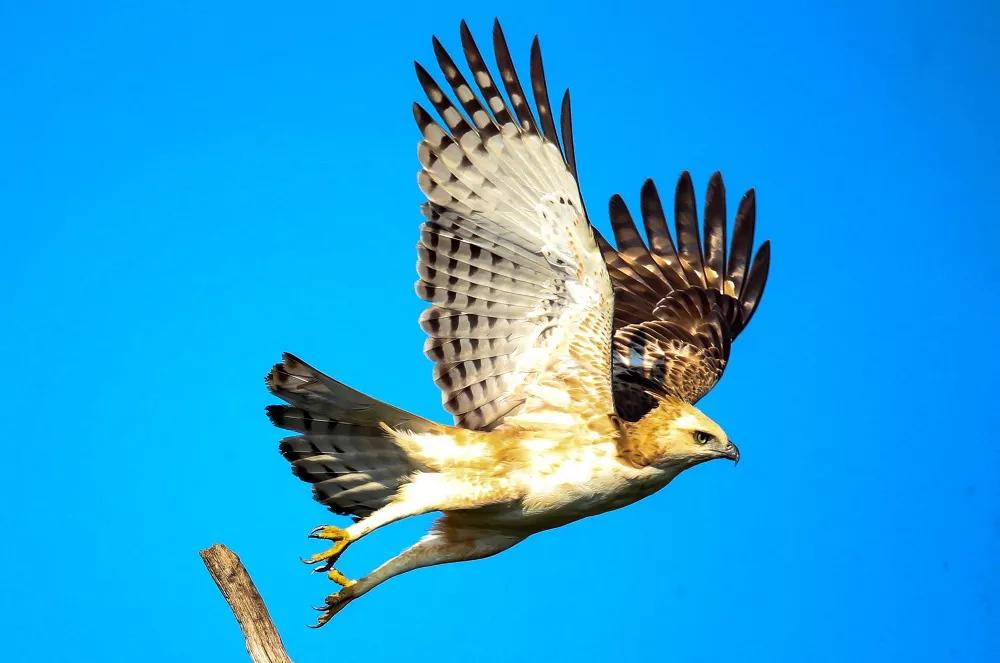In the world of birds of prey, three majestic and powerful groups stand out: eagles, hawks, and falcons. With their impressive wingspans and keen hunting abilities, these raptors evoke a sense of awe and admiration. However, while these birds share similarities in appearance and behavior, there are key distinctions that set them apart. In this article, we will explore the characteristics and differences between eagles, hawks, and falcons, shedding light on their unique adaptations and lifestyles.
Physical Characteristics:
Eagles: Eagles are large birds of prey known for their size and strength. They possess broad wings, sturdy bodies, and strong talons. Their hooked beaks are well-suited for tearing through flesh, allowing them to feed on a variety of prey, including fish, mammals, and birds. Eagles are recognized for their impressive wingspans, which can range from six to eight feet in some species. Additionally, they often exhibit a distinctive feathered crest on the back of their heads.
Hawks: Hawks come in a variety of sizes, with some species being smaller than eagles, while others can be comparable in size. They are characterized by sharp, curved beaks designed for tearing apart prey. Hawks have long, broad wings that enable agile flight and quick maneuverability during hunting. Their vision is highly acute, allowing them to spot prey from great distances. Hawks are versatile hunters, preying on small to medium-sized animals such as rodents, birds, and reptiles.
Falcons: Falcons are known for their exceptional speed and agility in the air. They have slender bodies and long, pointed wings, which enable them to reach astonishing speeds during high-speed aerial pursuits. Falcons possess a unique notch or “tooth” on their upper beak, which helps them sever the spinal cord of their prey with precision. Their diet primarily consists of small birds, insects, and bats. Falcons are renowned for their ability to perform intricate aerial maneuvers and stoop dives, reaching speeds of over 240 miles per hour.
Habitat and Range:
Eagles: Eagles tend to occupy a diverse range of habitats, including mountains, forests, coastal areas, and wetlands. They are found on every continent except Antarctica. Bald eagles (Haliaeetus leucocephalus) are commonly associated with North America, while the majestic African fish eagle (Haliaeetus vocifer) is prevalent in sub-Saharan Africa.
Hawks: Hawks are adaptable birds and can be found in various habitats, such as forests, grasslands, and deserts. They have a widespread distribution across North and South America, Europe, Asia, and Africa. Red-tailed hawks (Buteo jamaicensis) and Cooper’s hawks (Accipiter cooperii) are two well-known hawk species in North America.
Falcons: Falcons exhibit a broad range of habitats, including open grasslands, mountains, and coastal regions. They are found on every continent except Antarctica. Peregrine falcons (Falco peregrinus) are renowned for their ability to nest in urban areas and can be seen in many cities worldwide.
Behavior and Hunting Techniques:
Eagles: Eagles are often associated with soaring flights and impressive hunting techniques. They have a preference for perching and patiently scanning their surroundings for prey. Eagles are capable of swooping down from great heights to snatch fish from the water’s surface or grab small mammals and birds with their powerful talons.
Hawks: Hawks employ a variety of hunting strategies, including soaring, circling, and hovering. They rely on their exceptional vision to spot prey while in flight. Hawks often engage in surprise attacks, using their swift flight and sharp talons to capture prey on the ground or in mid-air.
Falcons: Falcons are known for their incredible speed and agility. They engage in high-speed pursuits, chasing down their prey in the air. Falcons employ the “stoop” technique, wherein they climb to a great height and then dive at astonishing speeds, delivering a devastating blow to their target. This hunting method allows them to capture agile birds in mid-flight.
Conservation Status:
All three species of birds of prey face various threats to their survival, including habitat loss, hunting, and pollution. However, their conservation status varies. Some species of eagles, such as the bald eagle, have recovered from near-extinction and are no longer considered endangered. Other species, such as the Philippine eagle, are still critically endangered. Many species of hawks and falcons are also threatened, with some, like the peregrine falcon, having made remarkable recoveries due to conservation efforts.
Conclusion:
Eagles, hawks, and falcons are magnificent birds of prey, each possessing unique adaptations and characteristics. While eagles are known for their impressive size and strength, hawks exhibit versatility and adaptability, and falcons astound with their remarkable speed and aerial prowess. Understanding the distinctions between these raptors allows us to appreciate their diverse hunting techniques, habitats, and roles within ecosystems. The coexistence of these majestic birds enriches our natural world, reminding us of the remarkable diversity and beauty of avian life.


 Facebook
Facebook  Instagram
Instagram  Youtube
Youtube 